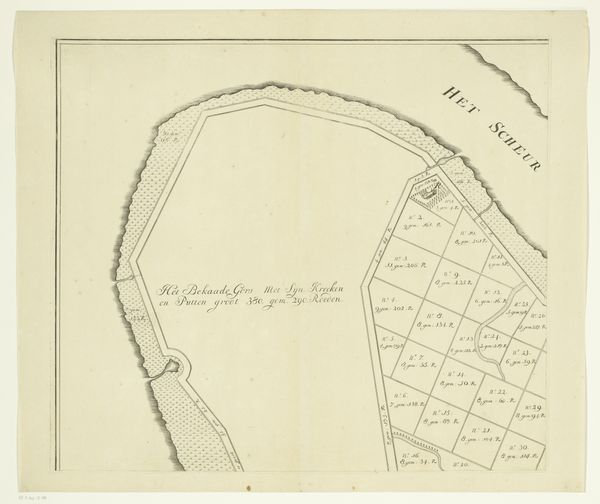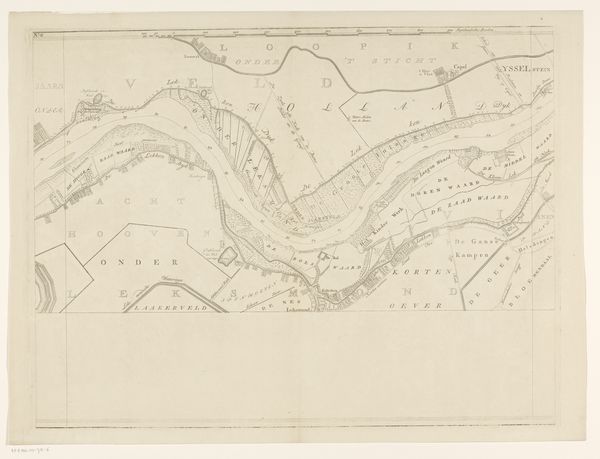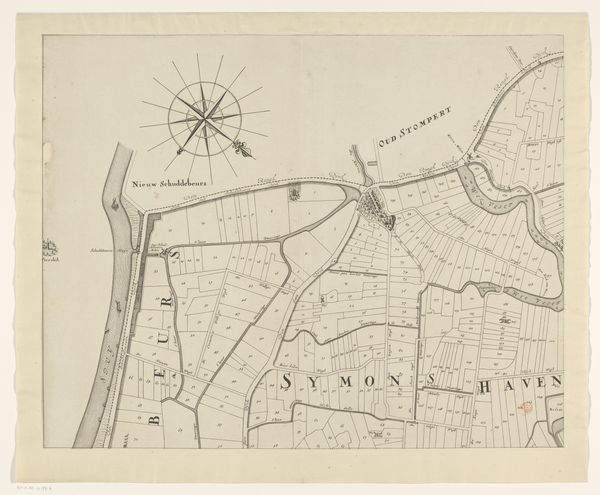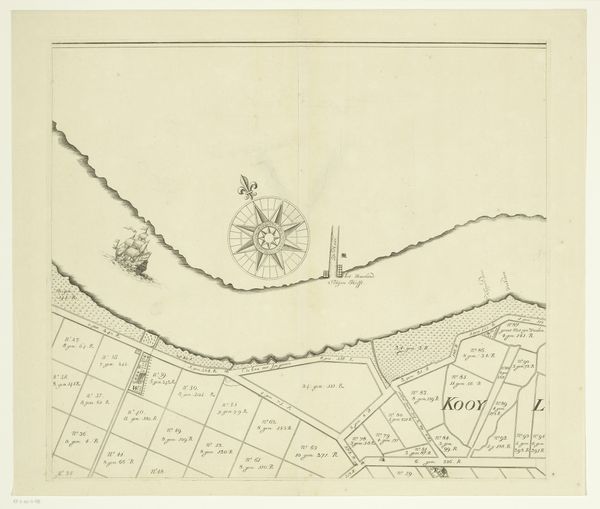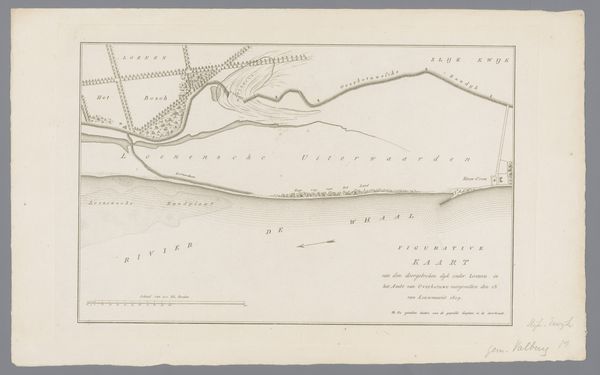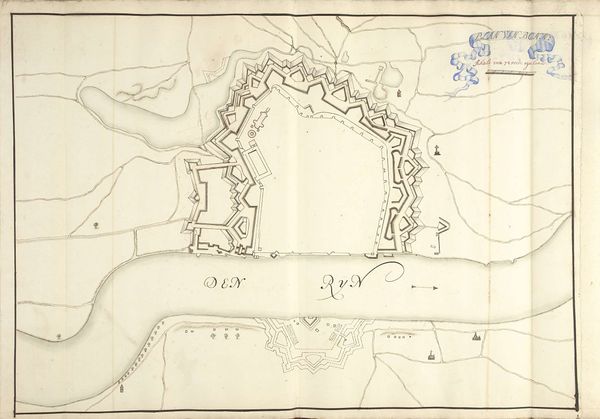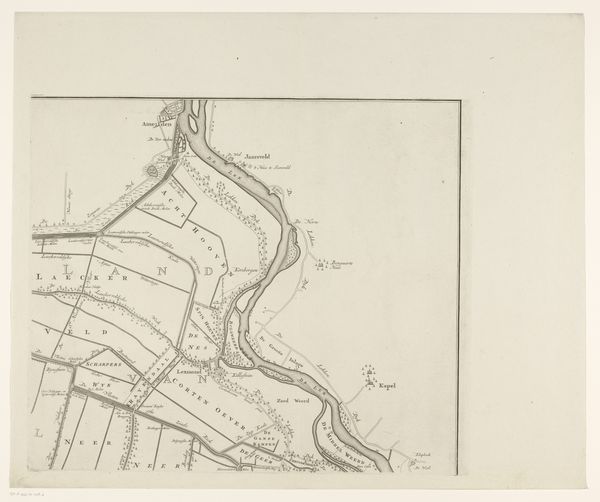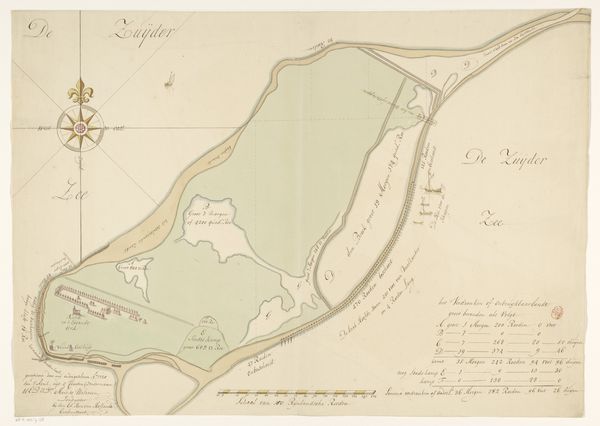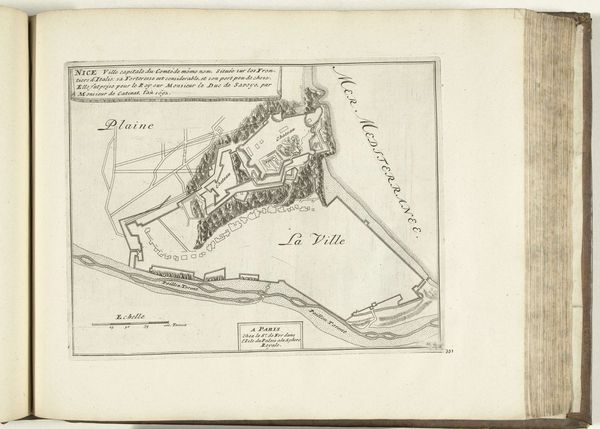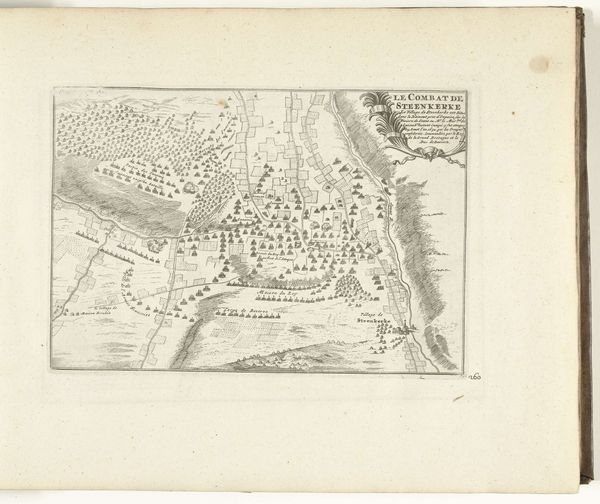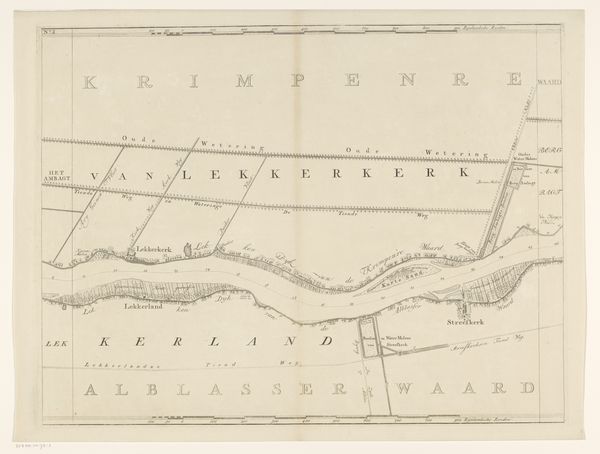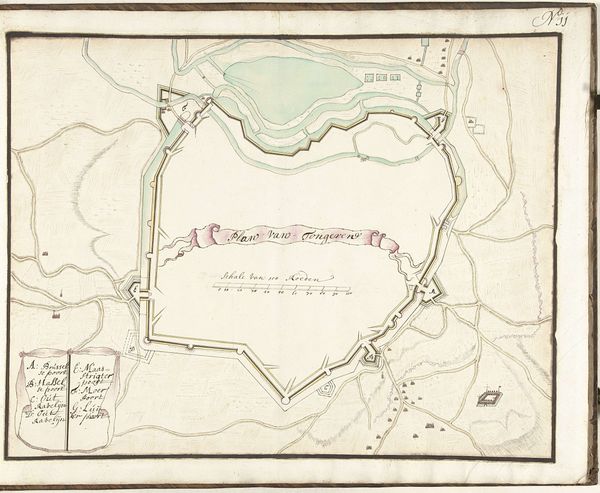
print, etching
# print
#
etching
#
landscape
#
etching
#
cityscape
Dimensions: height 499 mm, width 570 mm
Copyright: Rijks Museum: Open Domain
Curator: This is an etching titled "Kaart van het eiland Rozenburg (eerste deel van onder)," or "Map of the Island of Rozenburg (first part from below)," created in 1727. Editor: My initial impression is one of calm reserve. The limited palette and precise lines suggest a controlled, almost austere, vision of space. Curator: Indeed. The artist, though anonymous, meticulously details the landscape with an emphasis on geometrical forms: rectilinear fields meet the ragged coastline of Staal Deep. The network of lines establishes order. Editor: Yes, and it seems to tell a story beyond mere geography. Mapping was often tied to power—to surveying and controlling territory. Look at the inscription; these kinds of land surveys historically enabled enclosure for cultivation or extraction. Curator: True, though the composition avoids any sense of the picturesque, favoring utility over aesthetics. The cool tonality supports the etching’s function as a practical document, a formal description. It almost abstracts land ownership. Editor: But doesn't that lack of visible labor obscure something critical? We’re not seeing who toils on these neat parcels, nor the processes by which these borders were likely imposed. It suggests something unsettling about the presumed objectivity of cartography. Curator: I see your point. Yet I'm fascinated by the stark juxtaposition of natural form and geometric division. Look how the etching emphasizes contrast in texture; there is clear water on the one side versus detailed acreage on the other. Editor: What also comes to mind is rising sea levels, coastal erosion... These meticulously recorded boundaries now face the unpredictable forces of nature, prompting consideration about our lasting impact. This also underscores the temporal aspect, that our grip over the land and these social controls are not immutable. Curator: Fascinating perspectives! Editor: The piece challenges viewers to unpack historical control dynamics. Curator: Yes, a detailed visual object inspires broader critical analysis.
Comments
No comments
Be the first to comment and join the conversation on the ultimate creative platform.
